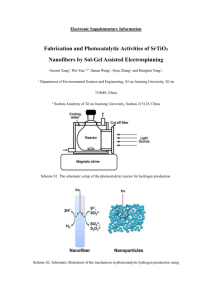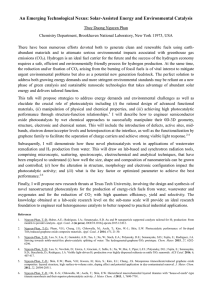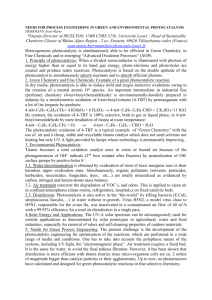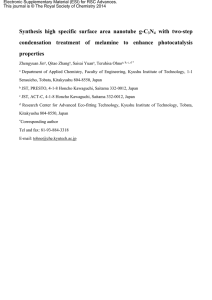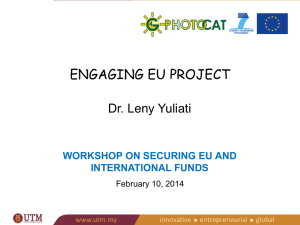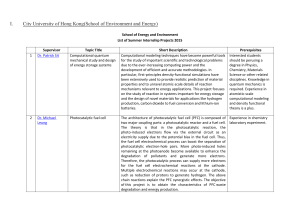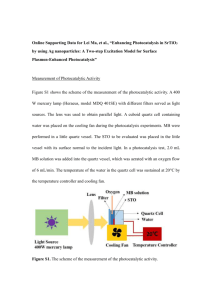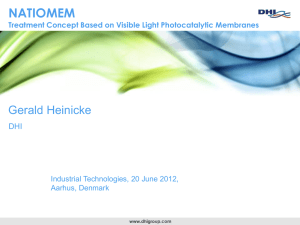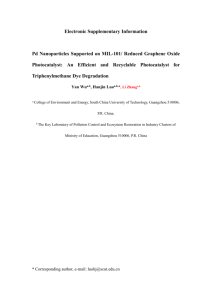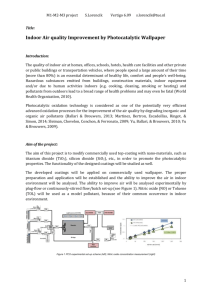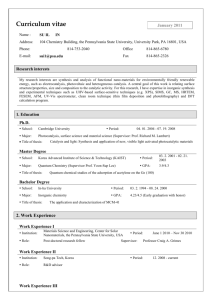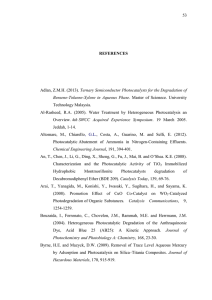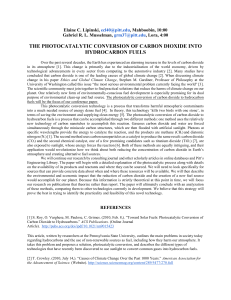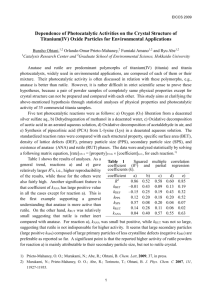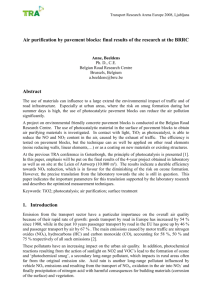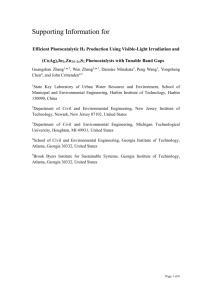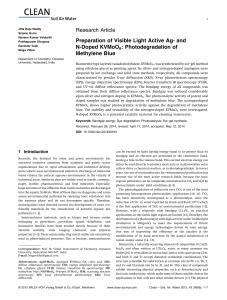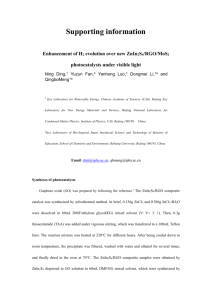New Materials for Photocatalysis and Photovoltaics By Abbas
advertisement
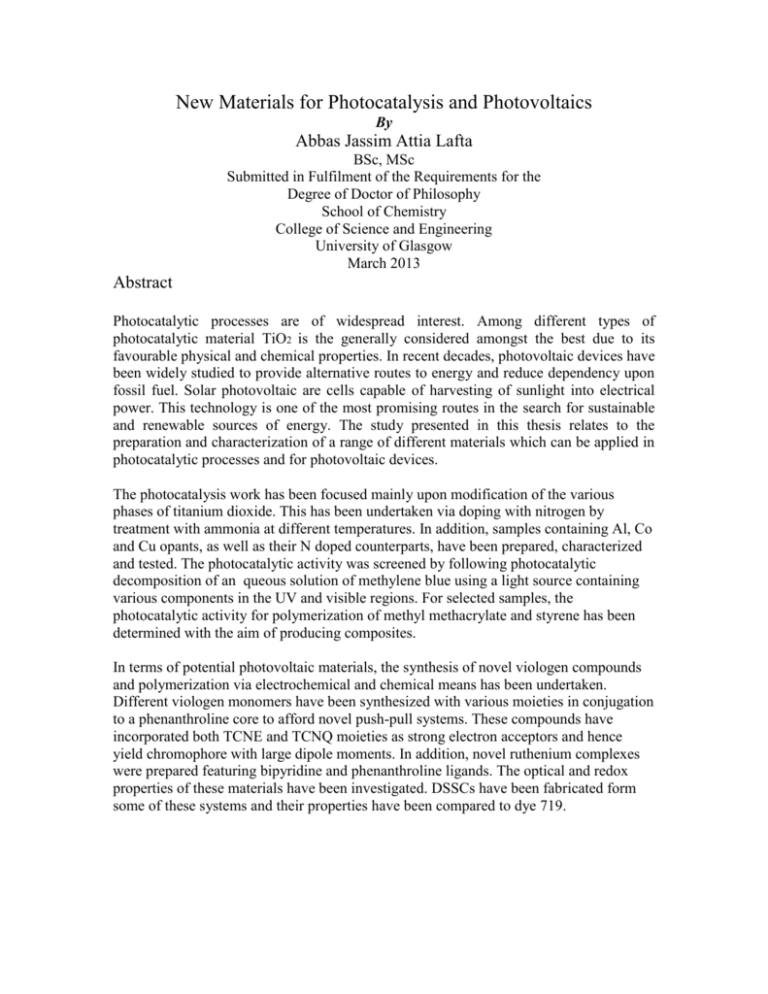
New Materials for Photocatalysis and Photovoltaics By Abbas Jassim Attia Lafta BSc, MSc Submitted in Fulfilment of the Requirements for the Degree of Doctor of Philosophy School of Chemistry College of Science and Engineering University of Glasgow March 2013 Abstract Photocatalytic processes are of widespread interest. Among different types of photocatalytic material TiO2 is the generally considered amongst the best due to its favourable physical and chemical properties. In recent decades, photovoltaic devices have been widely studied to provide alternative routes to energy and reduce dependency upon fossil fuel. Solar photovoltaic are cells capable of harvesting of sunlight into electrical power. This technology is one of the most promising routes in the search for sustainable and renewable sources of energy. The study presented in this thesis relates to the preparation and characterization of a range of different materials which can be applied in photocatalytic processes and for photovoltaic devices. The photocatalysis work has been focused mainly upon modification of the various phases of titanium dioxide. This has been undertaken via doping with nitrogen by treatment with ammonia at different temperatures. In addition, samples containing Al, Co and Cu opants, as well as their N doped counterparts, have been prepared, characterized and tested. The photocatalytic activity was screened by following photocatalytic decomposition of an queous solution of methylene blue using a light source containing various components in the UV and visible regions. For selected samples, the photocatalytic activity for polymerization of methyl methacrylate and styrene has been determined with the aim of producing composites. In terms of potential photovoltaic materials, the synthesis of novel viologen compounds and polymerization via electrochemical and chemical means has been undertaken. Different viologen monomers have been synthesized with various moieties in conjugation to a phenanthroline core to afford novel push-pull systems. These compounds have incorporated both TCNE and TCNQ moieties as strong electron acceptors and hence yield chromophore with large dipole moments. In addition, novel ruthenium complexes were prepared featuring bipyridine and phenanthroline ligands. The optical and redox properties of these materials have been investigated. DSSCs have been fabricated form some of these systems and their properties have been compared to dye 719.

